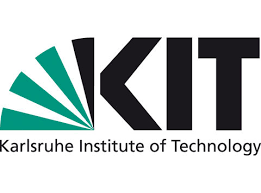Karlsruhe Institute of Technology: More resilience for critical infrastructures
Critical infrastructures such as power grids or traffic routes are increasingly characterized by digitization. This enables the systems to be controlled flexibly and efficiently in real time, but also makes them more susceptible to disruptions and attacks, such as cyber attacks. Researchers at the Karlsruhe Institute of Technology (KIT) are working on how supply systems can be designed to be sustainable and resilient at the same time and what decisions need to be made in critical situations. To this end, they develop concepts based on artificial intelligence and mathematics and develop methods for robust decisions, taking into account new risks and uncertainties. At the Hannover Messe 2022 from May 30th to June 2nd, the team will be represented at the KIT booth in the “Future Hub” (Hall 2, Booth B40).
Whether in the supply of electricity, water or food, in transport or in health care: the functionality of critical infrastructures determines the availability of everyday and vital goods and services. Innovative technological developments, such as increasing digitization, enable flexible and decentralized control of supply systems and open up new opportunities, especially for the energy and mobility transition. However, they also increase the susceptibility to disturbances and attacks from the outside. For example, the risk of cyber attacks has been increasing for several years, in which not only data can be misused, but entire systems can be paralyzed. In a decentralized energy system that primarily uses regenerative sources,
The working group Resilient and Smart Infrastructure Systems – RESIS, headed by Dr. Sadeeb Simon Ottenburger and Wolfgang Raskob at the KIT Institute for Thermal Energy Technology and Safety. In addition, RESIS is a member of the CEDIM – Center for Disaster Management and Risk Reduction Technology of the KIT. At the Hannover Messe 2022 from May 30th to June 2nd, the team will be represented at the KIT booth in the “Future Hub” (Hall 2, Booth B40). In relation to technical systems, resilience describes the property of not failing completely, even under high loads or despite disruptions, but rather maintaining essential functions and soon being fully operational again.
Dealing with uncertainty is part of it
“The planning of future critical infrastructures that is already taking place must systematically take into account new systemic risks and major uncertainties and, in particular, understand the negative effects of individual or multiple events on society,” says Ottenburger. With regard to the energy supply, this means, for example, that the power grid is becoming increasingly important with the energy and mobility transition. This in turn depends on information and communication networks. However, it is difficult to predict how the dangers arising from new network structures and boundary conditions, such as the consequences of global warming, the population structure or the demand for electricity, heat and transport, will develop in the future. What robust solutions can look like under great uncertainties,
The RESIS working group develops concepts and methods for the design and operation of smart and adaptable critical infrastructures, especially energy and water supply networks and transport structures. Central to this is a platform that simulates stress scenarios under various boundary conditions and thus allows interactions between different subsystems and thus systemic risks to be analyzed.
Microgrids ensure power supply for vital facilities
In order to increase the resilience of the energy supply, microgrids can be integrated, for example, i.e. many small intelligent energy cells that not only fulfill a grid-stabilizing function, but also temporarily function autonomously. In this way, critical infrastructures such as hospitals, pharmacies and fire brigades can be distributed across different microgrids. Location and design of storage and distribution infrastructures are crucial to ensure self-sufficient supply in critical phases. “These preventive design strategies already take effect in the event of a brownout, i.e. a voltage drop, for example due to a power shortage at the transmission grid level, to prevent a blackout,” explains Sadeeb Simon Ottenburger.
In addition to the technical factors, the researchers working with Ottenburger and Raskob are increasingly including social aspects in their resilience research. Critical infrastructures depend on the trust of the population; preventive strategies require social acceptance. When resources become scarce, consumers are required to be flexible, for example during a long-lasting European dark lull, when less electricity can be provided from renewable sources, energy stores are empty, or resources are no longer available due to cyber attacks.
Center for Disaster Management and Risk Reduction Technology (CEDIM)
The CEDIM, an interdisciplinary facility of KIT, conducts research on catastrophes, risks and security. The aim is to better understand natural and man-made risks in a rapidly changing world characterized by population growth, urbanization and climate change, to identify them earlier and to better manage them. To this end, the researchers combine risk assessment, risk analysis, risk management and risk communication and, based on this, develop concepts for improving the resilience of infrastructure and supply.

